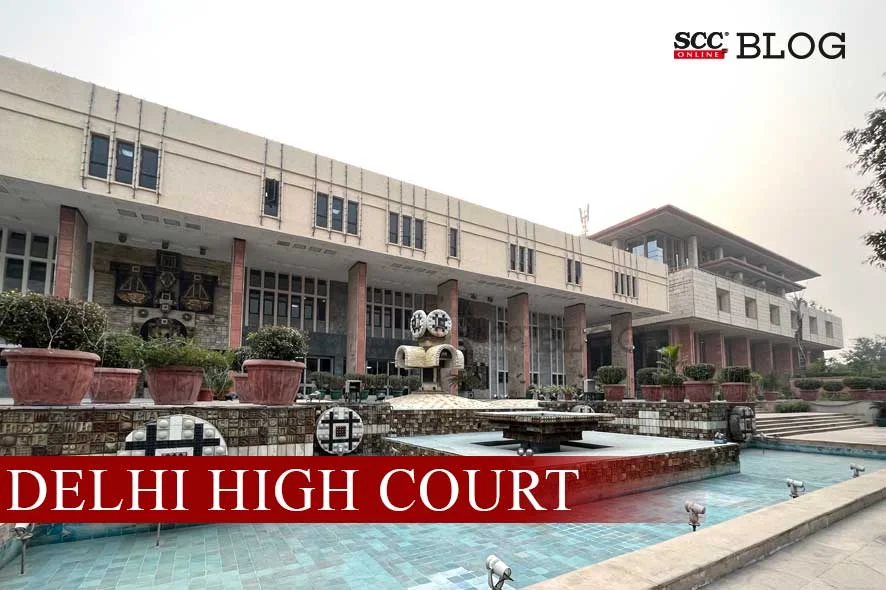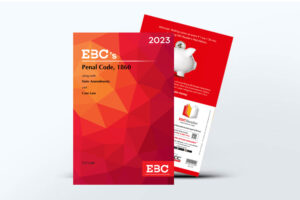Delhi High Court: An appeal was filed by the appellant/claimant under Section 30 of Employee’s Compensation Act, 1923 directed against the order dated 07-10-2021 passed by Commissioner, Employee‘s Compensation in case whereby her application for compensation was dismissed. Dharmesh Sharma, J., set aside the impugned order passed by the Employee‘s Compensation Commissioner and directed payment of Rs. 5 lakhs with interest 12% p.a. from the date of accident to be released by Universal Sompo General Insurance Company Ltd. (respondent 2) to the claimant’s wife within a month from today, subject to future adjustment on the final determination of quantum of compensation and payment thereof to the claimants.
The appellant is the deceased’s wife who was employed as a driver receiving a salary of Rs. 15,000 per month plus Rs.200 per day towards meals. On 25-06-2018, the deceased met with an accident by some unknown vehicle coming at a very high speed driven in a rash and negligent manner and he was declared dead consequent to it First Information Reports was registered under Section 279, 304 of Penal Code, 1860 [‘IPC’]. The appellant in the application seeking compensation under Section 22 of EC Act on the death of deceased, however, only Rs. 30,000 was paid to her by the registered owner through cheque and despite serving of legal notice dated 27-11-2018 no compensation has been paid and rather the registered owner took evasive pleas, denying the compensation on the ground that deceased was not a regular employee but a casual one.
The Commissioner held that in any case, the insurance company was duty-bound to indemnify the registered owner since the truck in question was duly insured. It further held that the employer is liable for compensation only if personal injury is caused to an employee by accident “arising out of and in the course of employment”. It was held that since the deceased added peril only when he met with an accident at his own will, no liability could be fastened on the registered owner as also resultantly on respondent 2, and the claim petition was dismissed.
The Court noted that it is clear that the deceased, after stopping his truck, got down and went over the other side of the road and probably attended to somebody who had been injured in a motor vehicle accident. Unfortunate as it may look, it is while he was returning to his vehicle, which by all probabilities was properly parked on the sideway, that he got struck by another unknown speeding vehicle and sustained injuries. Although there is no evidence as to what sort of help or assistance was rendered by the deceased, it is to be assumed that being a ‘Good Samaritan’ he stopped his truck and responded to somebody in distress. There was no evidence before the Commissioner that in order to exclude the liability of the employer for payment of compensation, there was any blemish on the part of the driver as well as there was no evidence that he disregarded any safety measure provided to him by the employer with respect to handling the truck entrusted to him and to be driven for the benefit of the business of his employer.
Placing reliance on Savelife Foundation v. Union of India, (2016) 7 SCC 194, the Court observed that the underlying judicial philosophy is that that a bystander who is a witness to the accident and/or a Good Samaritans, should not be harassed or intimidated in any manner merely because he or she voluntarily comes forward and provides immediate assistance to a victim of motor vehicle accident on public road and highways. Extending the same judicial philosophy in the instant case, the Commissioner while passing the impugned judgment overlooked the broader or the larger aspect of the whole scenario that helping an injured on a public road/highway is prime duty of everyone. An individual, who out of sheer generosity helps someone in distress, is a ‘Good Samaritan’ according to the parable in Gospel of Luke in the Holy Bible. Thus, Good Samaritan laws shield/protect a rescuer from being sued if the rescue miscarries, except in cases of gross negligence or recklessness.
Taking reference from a paper written by Åsbjørn Melkevik Harvard University, on the topic Against Samaritan Laws: The Good, the Bad, and the Ugly, the Court remarked that The legislative and judicial axiom should be to protect persons from punishment who out of benevolence provide help to a fellow person in need of aid and to reduce any hesitation bystanders may have about assisting those who need it. In the absence of such legal protection, attributes such as ‘kind-heartedness’, ‘kindness’, ‘empathy’ towards strangers, which makes humans the social animals they are, who rely on each other for survival and emotional well-being, would be stripped of their very humanity rendering these attributes redundant. Thus, in the absence of legal protection, it would become impossible for individuals with kind hearts to act out of benevolence, help a person in distress or a victim of a motor vehicle accident.
Internationally, in France, the duty to rescue was introduced in French criminal law in 1941 and has been provided under Article 223-6 of the French Penal Code (FPC), 1994, where any person who wilfully abstains from helping someone will be punished and fined. In the United States of America several U.S. States like Vermont, Minnesota, and Rhode Island passed laws based on the idea of a Good Samaritan, establishing the duty to rescue others from danger or peril. Likewise in Germany, failure to provide first aid to a person in need is punishable under Section 323c of the German Criminal Code. Infact, Portugal was the first nation to include the duty to rescue in its Portuguese Civil Code of 1867 (PCC, 1867) and Article 2368 of the PCC, 1867, extends a duty on the witnesses to a crime to help or assist the victim.
Thus, the Court concluded that the reasons assigned by the Commissioner that it was in no part of the duty of the deceased to stop his truck and go over to the other side to help someone and by doing so he added peril to his oneself, is not only morally and legally unfathomable but also does not conform with the purpose or the objective of the EC Act as well as the M.V. Act. Incidentally, the Central Motor Vehicles Rules, 1989, very significantly mandates a comprehensive ‘Training Manual‘ for improving the skills of the drivers, that inter alia not only mandates the motorist to have the medical tool kit in the motor vehicles while driving on public road/highways but also to make them abreast with life saving techniques to provide medical help in case of motor accidents, not only to oneself but anybody else involved in the motor accident.
The Court held that the matter be remanded back to the Employee‘s Compensation Commissioner with directions to assess the quantum of compensation to be payable to the claimants within a period of two months from the date of judgment, after affording the claimants and the employer besides respondent 2/Insurance company to produce relevant material for consideration. However, there shall be no adjustment towards ex gratia amount of Rs. 30,000 paid to the claimants by respondent 1/registered owner.
[Kanta v Gurvinder Kapoor, 2023 SCC OnLine Del 7713, decided on 05-12-2023]
Advocates who appeared in this case :
Mr. Vipin Kumar Mishra, Mr. Lalit Kumar Gupta and Mr. Manoj Kumar Yadav, Advocates for Appellants
Mr. Rakesh, Adv. for R-1.







